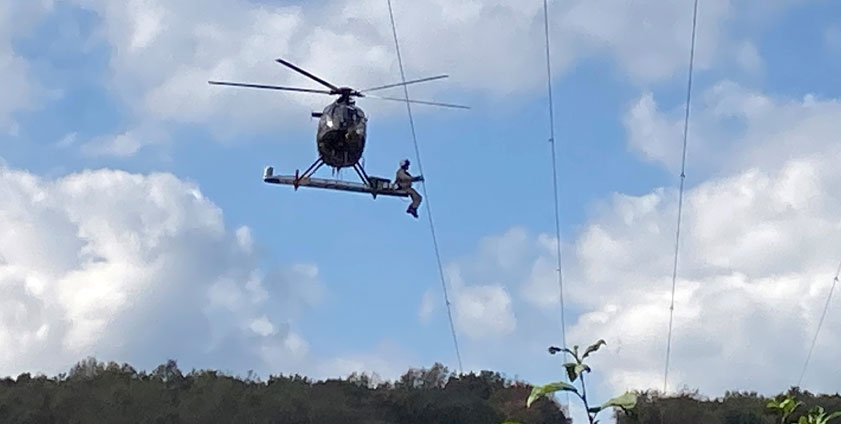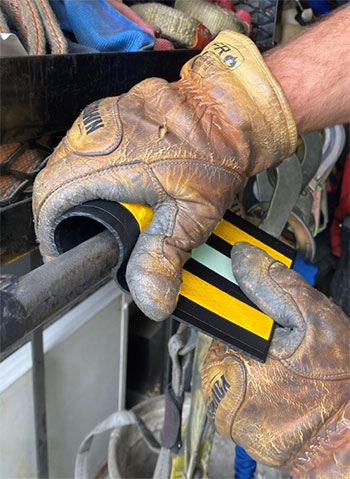Penelec Project Protects Eagles

A helicopter hovers over the 1,200-foot stretch of line as a worker installs the avian flight diverters.
January 6, 2022

The brightly colored diverters make the line more visible to bald eagles, preventing collisions that could injure the birds and cause power disruptions.
Penelec has placed special markers on a stretch of power line in a wildlife refuge in Crawford County, Pa., to help bald eagles avoid running into the lines as they fly between their nest and fishing grounds.
Hovering over the lines in a helicopter, workers clipped avian flight diverter markers every 15 feet along a 1,200-foot span of wire that crosses a marsh in the Erie National Wildlife Refuge. The triangular flight diverters are brightly colored and reflective, making it easier for eagles to spot the line.
“The biology, behavior and habitat use of raptor species puts them at risk of colliding with transmission and distribution wires,” said Amy Ruszala, senior scientist, Transmission Permitting, and the company’s avian expert. “Avian flight diverters provide a thickness to the line that makes it easier for birds to see and avoid.”
Penelec installed the flight diverters after first upgrading the stretch of line, replacing several 50-foot poles with two 120-foot towers. The taller structures were placed at the edge of the swampy area, raising the line higher above the marsh. Previously, the distribution line was challenging to repair and maintain because the shorter poles were situated in the water.
One of the new structures stands adjacent to a white pine tree that is home to a pair of bald eagles that have returned to a massive nest each year since 2014. Penelec crews performed the construction work after nesting season concluded.
The work in the wildlife refuge is one of more than 100 projects FirstEnergy has completed to protect birds of prey, like eagles and ospreys, over the past five years. The projects include installing large, wooden nesting platforms or perch arms near electrical equipment where birds like to nest or temporarily rest; insulating power lines near perch or nest locations; and adding large, brightly colored visual markers on lines to alert birds to the wires.
FirstEnergy also uses drones to inspect bird nests and has deployed a mobile app that allows utility workers to report avian issues in real time.
The initiatives help utility personnel more efficiently identify and respond to bird activity along power lines to help prevent service disruptions and protect wildlife.
“These ongoing efforts enhance service reliability for customers while protecting raptors and birds of prey that often live near our electrical equipment,” said Amy.